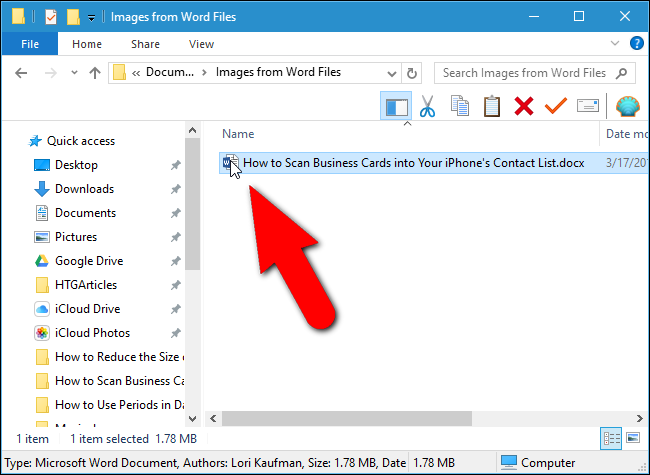- Extract Embedded Files From Word Mac
- Extract Word Document
- Extract Embedded File Word Office For Mac Download
Template for Word 97-Word 2003 files.dotm: Word Macro-Enabled Template: Template for creating new Word 2019, Word 2016, Word 2013, Word 2010, and Office Word 2007 files that contain macros. Users who want to include UI customizations or macros in the template should use this file format.dotx: Word Template.
UPDATE: 4.April.2018
Some have reported that this method has stopped working since Sierra. It has, but it seems mostly with the default unarchive that ships with OSX. What will happen is that you will rename to a zip file, and then when you unzip it will turn in to a .cpgz file. If you unzip that it will turn in to a zip file – and it goes round I circles.
For me, I found that if I installed the Unachiver, and then unzipped using that instead, then no problem (the steps below work as described). I hope this helps.

- When you embed an object in Office documents, the original file name and the default icon will be selected automatically. Here is a step by step process, if you are looking for changing the embedded file name in any office documents like Word, Excel or PowerPoint.
- An embedded worksheet is a flat file. Once it's part of a Word document, it behaves like a piece of that document and can be edited in Word. There is no connection between the original worksheet and the Word document it's now a part of. Use this option if you plan to make minimal changes to the table data or if the data involves simple.
You can download the Unarchiver from their website or the Mac App Store. See download information here: https://theunarchiver.com
Lately I’ve been receiving a number of files in pptx format, but I present using my iPad and so convert these presentations to Keynote. If the slides contain images and text only, this conversion is relatively painless – usually there are just a few formatting and alignment issues that need to be addressed and then I’m good to go. All I need do is open the pptx file in keynote, either on my Mac or iPad, and Keynote handles the conversion quite well.
Extract Embedded Files From Word Mac
If, however, the presentation contains media, then this process will not transfer across the video presentations, and I end up with an image snapshot of the video in the slide as a placeholder where the video used to be (or an image of a play symbol, if the media is an audio file).
In order to access media files embedded within pptx files, follow these steps (and they work on both Windows machines and Macs):

Step 1
Make a copy of the pptx file.
Step 2
Rename the pptx file – change the extension from ‘pptx’ to ‘zip’.
You will probably get a message warning you about the change of extension. Make sure you allow the change so that the file name will end in ‘.zip’.
Step 3
Extract the zip file (or browse the zip file contents). You will see a directory structure now present in the folder. Navigate to ppt > media and all your image and media files will be present. You can now copy these files (and convert, if necessary) for use in other presentation mediums.
In today’s article, we will provide you with 2 quick ways to extract all the MS office files embedded in your Word document.
Every so often, we could inherit a Word document containing multiple embedded files, such as below:
Normally, to export them, we will have to open the file and then save it. This way, however, is acceptable when there are few files. Once a large number of objects are involved, we shall look for some more quick and energy-saving shortcuts. For this reason, we have the following 2 methods ready for you.
Method 1: Change the File Extension
- First off, before anything else, we recommend you to make a copy of the target file, in case any incidents may cause damage to it.
- Secondly, right click on the document icon and choose “Rename” on the menu.
- Thirdly, change the extension “.docx” to “.zip”.
- You will encounter with the warning message, and just click “Yes”.
- After the document converting to a zip file, double click to open it.
- Now double click to open “word” folder.
- Then double click to open “embeddings” folder. You can find all files there but without identifiable. The mess is you have to rename them.
Method 2: Run Word Macro
- First and foremost, click on “Developer” tab and then the “Visual Basic”. Or just press “Alt+ F11” instead if the “Developer” tab isn’t available.
- Next click “Normal” project.
- Then click “Insert” tab.
- Choose “Module” on the drop-down menu.
- Now double click on the new module to have the coding space.
- And paste the bellowing codes there:
- Finally, click “Run” button or hit “F5”.
All embedded files will be stored under a specific directory with their original names.
Note:
In code line “objEmbeddedDoc.SaveAs “C:UsersPublicDocumentsNew folder” & strEmbeddedDocName”, the “C:UsersPublicDocumentsNew folder” is the location for storing files. Remember to replace it with an actual one.
Take Care of Word Files
Since some of you work with Word very frequently, then confronting with a corrupted Word can be commonplace. Therefore, that’s why we lay much emphasis on well handling files. After all, once a file gets damaged, it takes both time and money to bring it back to life.
Extract Word Document
Author Introduction:
Vera Chen is a data recovery expert in DataNumen, Inc., which is the world leader in data recovery technologies, including fixing damaged Excel and pdf repair software products. For more information visit www.datanumen.com